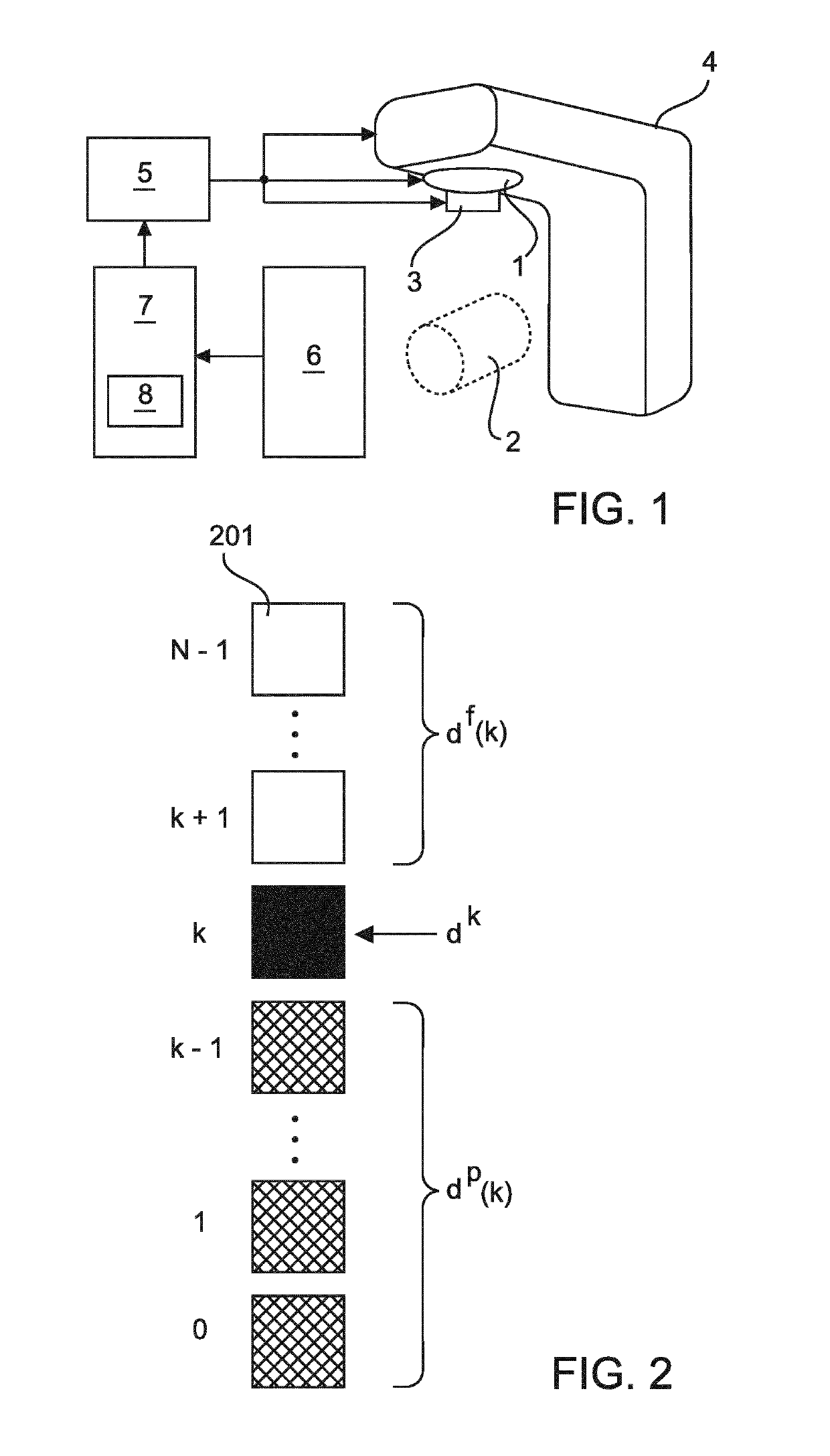Adaptive radiation therapy planning
a radiation therapy and patient technology, applied in radiation therapy, x-ray/gamma-ray/particle irradiation therapy, therapy, etc., can solve the problems of (net) shrinkage of tumor, high radiation dose to such tissue, and high risk of affecting healthy tissu
- Summary
- Abstract
- Description
- Claims
- Application Information
AI Technical Summary
Benefits of technology
Problems solved by technology
Method used
Image
Examples
Embodiment Construction
[0035]FIG. 1 schematically and exemplarily illustrates an embodiment of a radiation therapy system for delivering radiation treatments to tumors or other diseased target structures within a human or animal patient body.
[0036]In the illustrated embodiment, the radiation therapy system comprises a radiation source 1, which can be operated to emit ionizing radiation to be delivered to a region of the patient body including the target structure. In order to deliver the radiation, the patient body is positioned in a treatment zone 2 of the system on a support, which may be configured as a patient table.
[0037]The radiation source 1 may include an x-ray tube or a linear particle accelerator for producing one or more ionizing radiation beam(s). The radiation source 1 is controllable in order to vary the intensity and / or energy of the radiation beam. Further, the radiation source 1 may be provided with a collimator 3 for shaping the radiation beam. The collimator 4 may particularly allow var...
PUM
 Login to View More
Login to View More Abstract
Description
Claims
Application Information
 Login to View More
Login to View More - R&D
- Intellectual Property
- Life Sciences
- Materials
- Tech Scout
- Unparalleled Data Quality
- Higher Quality Content
- 60% Fewer Hallucinations
Browse by: Latest US Patents, China's latest patents, Technical Efficacy Thesaurus, Application Domain, Technology Topic, Popular Technical Reports.
© 2025 PatSnap. All rights reserved.Legal|Privacy policy|Modern Slavery Act Transparency Statement|Sitemap|About US| Contact US: help@patsnap.com

